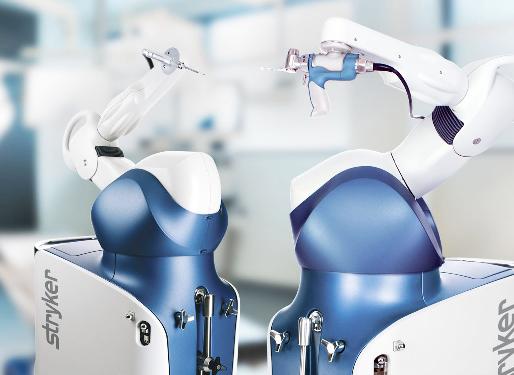
1 minute read
Introducing Our New Robotic Hip and Knee Surgery
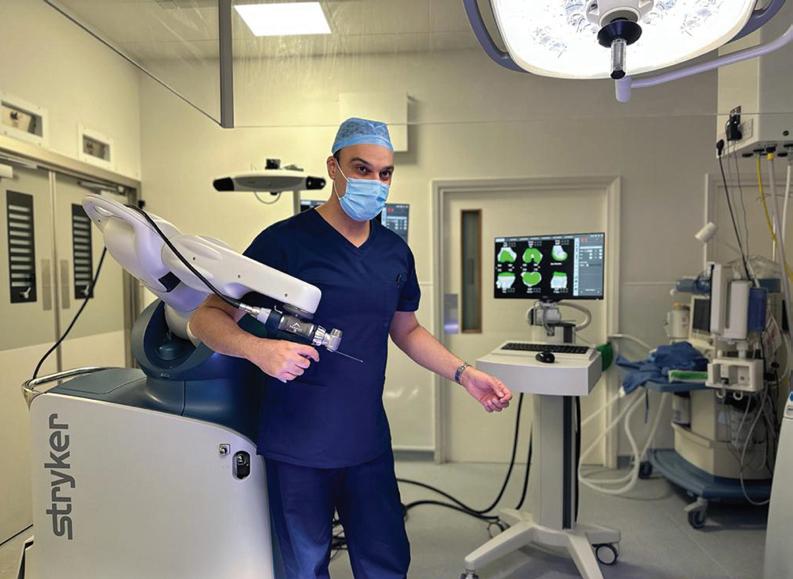
Before Surgery
Advertisement
It all begins with a CT scan of your joint that is used to generate a 3D virtual model of your unique anatomy. This virtual model is loaded into the Mako system software and is used to create your personalized pre-operative plan.
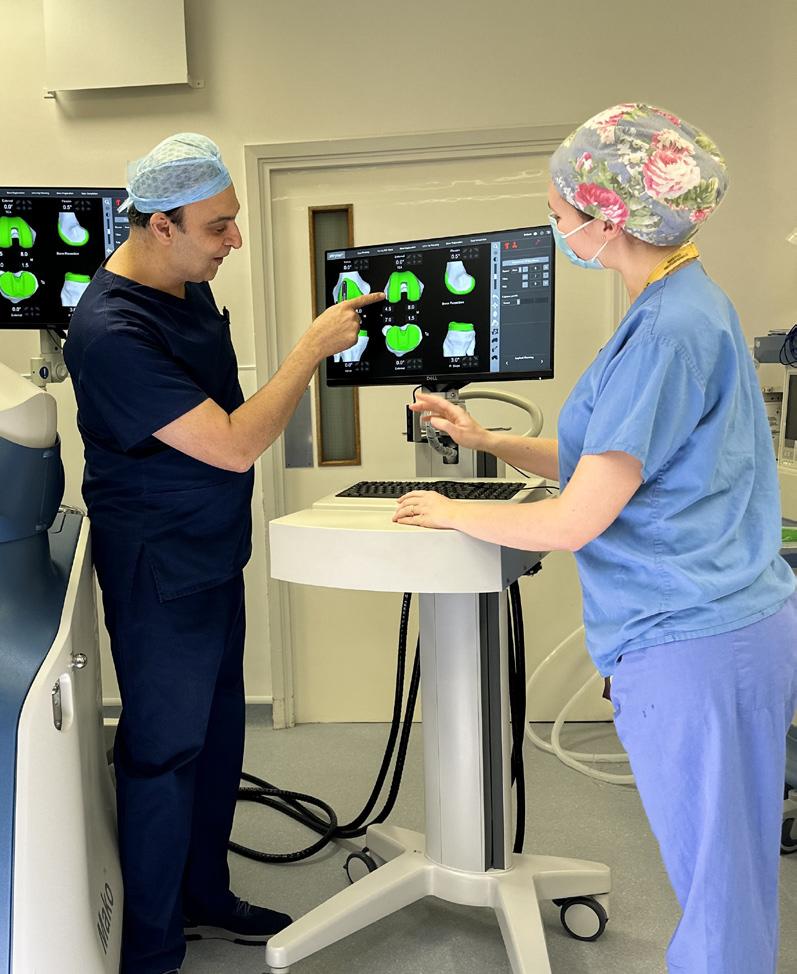
In The Operating Room
In the operating room, I will use Mako to assist in performing your surgery based on your personalized preoperative plan. The Mako system also allows me to make adjustments to your plan during surgery as needed. When I prepare the bone for the implant, the Mako system guides me within the pre-defined area and helps prevent me from moving outside the planned boundaries. This helps provide more accurate placement and alignment of your implant.
After Surgery
After surgery, my Medical Team and Physiotherapists will set goals with you to get you back on the move. They will closely monitor your condition and progress.
CAUSES OF YOUR HIP & KNEE PAIN
Your joints are involved in almost every activity you do. Movements such as walking, bending and turning require the use of your hip and knee joints. When the joint becomes diseased or injured, the resulting pain can severely limit your ability to move and work.
The hip and knees are amongst the largest joints in the body and are central to nearly every routine activity. A smooth plastic like lining called cartilage covers the ends of the bones and prevents them from rubbing against each other allowing for flexible and nearly frictionless movement (Figure 1, right).
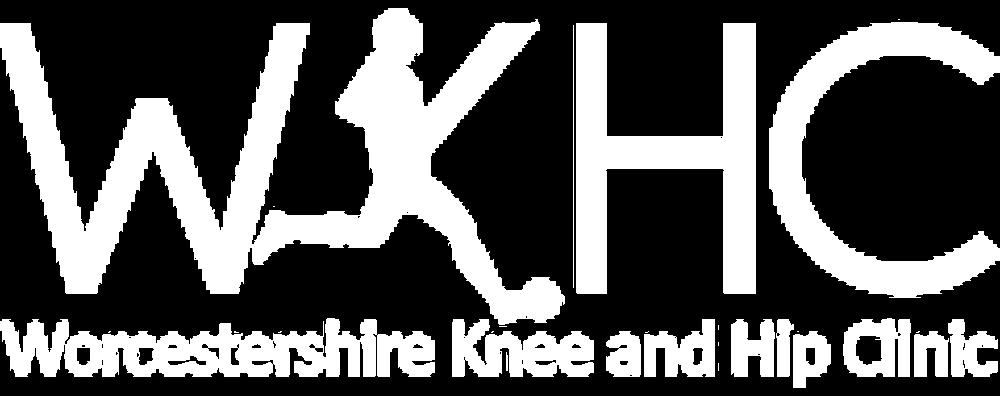
Cartilage also serves as a shock absorber, cushioning the bones from the forces between them. Finally, a soft tissue called synovium lines the joint and produces a lubricating synovial fluid that reduces friction and wear. Each patient is unique and can experience knee or hip pain for different reasons.
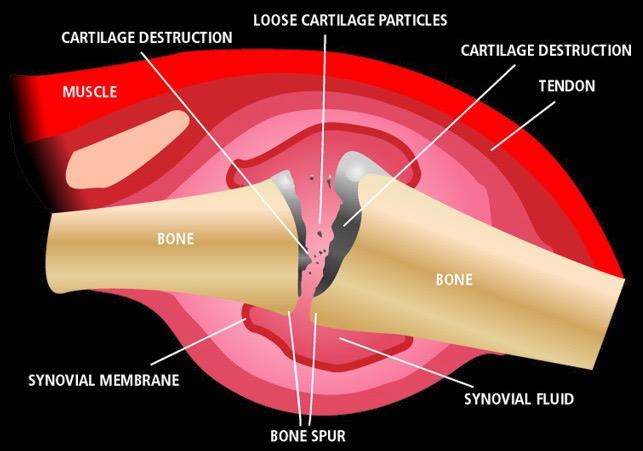
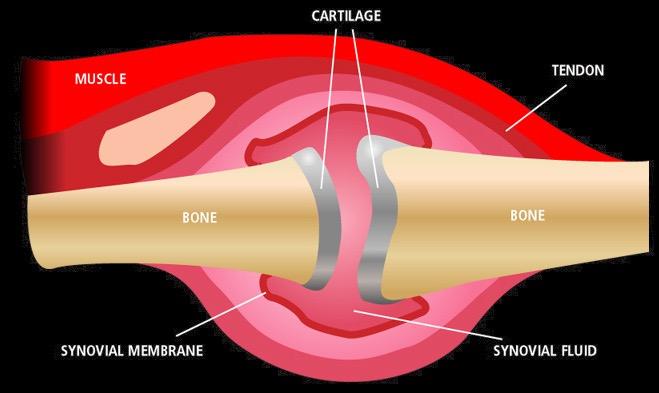
The main cause of hip/knee pain is osteoarthritis
This is sometimes called degenerative arthritis because it is a wearing out condition involving the breakdown and of cartilage and formation of bone spurs (Figure 2, right). With osteoarthritis, the cushioning cartilage at the end of the femur may have worn down making walking painful as bones rub against bone. Once the bone ends are exposed the joints become more painful on weight bearing.
Another common cause of knee and hip pain is rheumatoid arthritis which is an inflammatory condition . Rheumatoid arthritis produces chemical changes in the lining of the joints or synovium that causes it to become thickened and inflamed. In turn the synovial fluid destroys the cartilage, the end result is cartilage loss pain and stiffness (Figure 2). Because the primary problem is the synovial inflammation this causes damage to multiple joints, including non weight bearing joints in the hands and feet.





